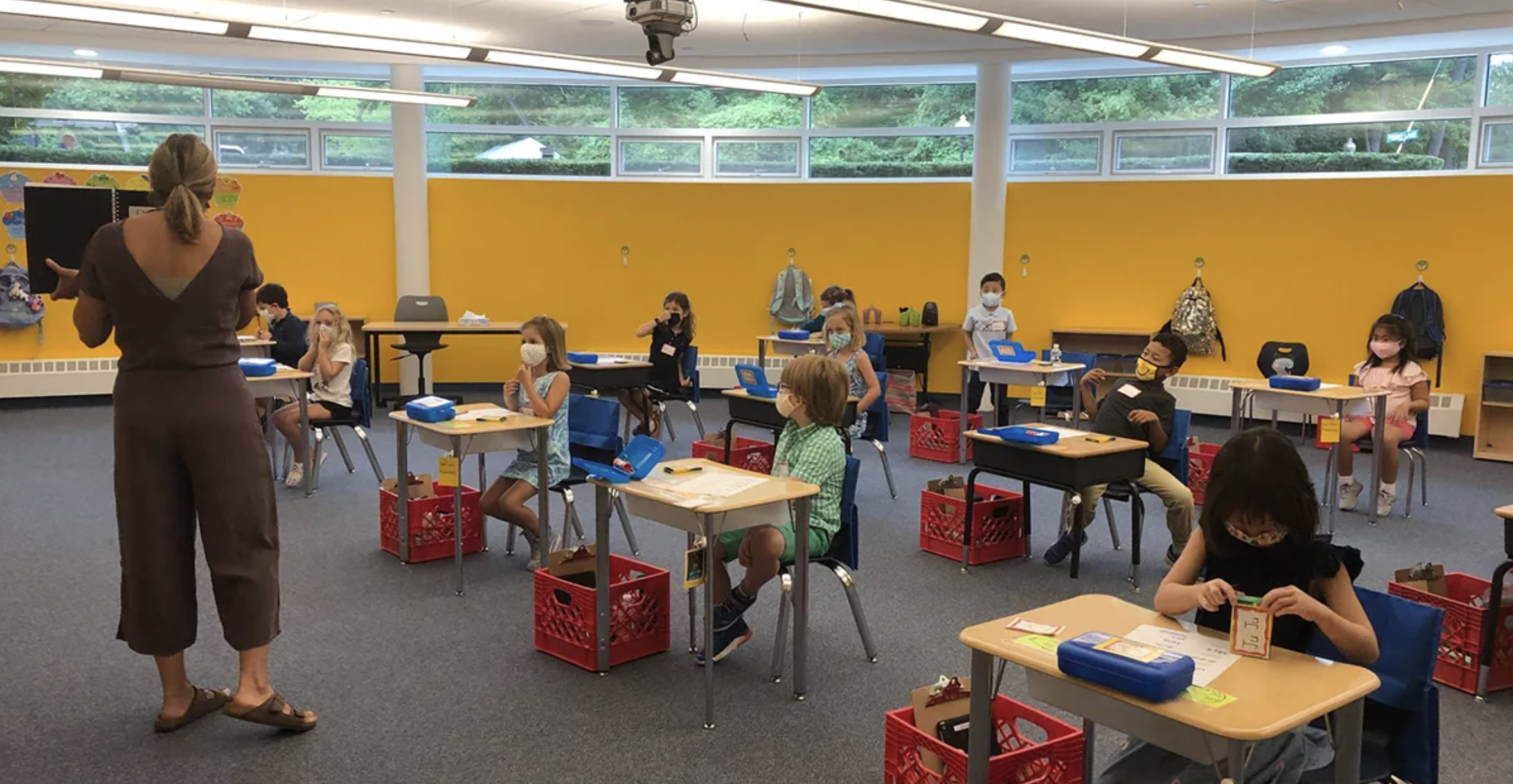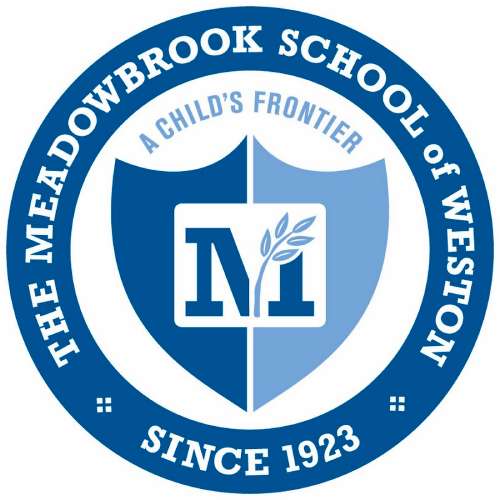
So many children are looking forward to being back at school in person with their teachers and friends. The American Academy of Pediatrics enumerates the many reasons this is the ideal, from academic achievement to social growth to physical and mental health. The Meadowbrook School knows the importance of strong relationships in children's development. While these can be built at a distance, the bonds become that much more powerful when students and teachers are together every day.
Yet the AAP also stresses that many safety measures must be in place for students to go back to school without increasing the spread of COVID-19. If a region has the spread of the virus under control, if the school has implemented a multifaceted health and safety plan, and if families do their part to adhere to guidelines, then in-person learning may continue.
What should you look for in a school’s safety measures to ease your mind as you send your child back to school?
Physical Distancing
Because the primary mode of virus transmission is through respiratory droplets from people in close proximity, the Centers for Disease Control and Prevention recommends keeping six feet between all individuals. This means everything from having separate student desks all six feet apart to hallway routes with plenty of space for students and faculty to distance. Activities with increased exhalation, such as singing and exercise, should be done outdoors and spaced apart.
The logistics are complex, and schools will look very different inside in order to maintain distancing. The Meadowbrook School consulted with an architectural firm that detailed how many students can fit in each space and how traffic should flow to maintain the six-foot distance at all times. The school used the resulting map to choose the best indoor spaces to keep each grade together and in their own space for most of the day. The school has closed gathering areas and replaced shared desks and hallway cubbies with single desks with their own storage space.
The school also purchased two tents per grade, and is in the process of furnishing them with electricity and whiteboards so that each grade has both indoor and outdoor learning spaces.
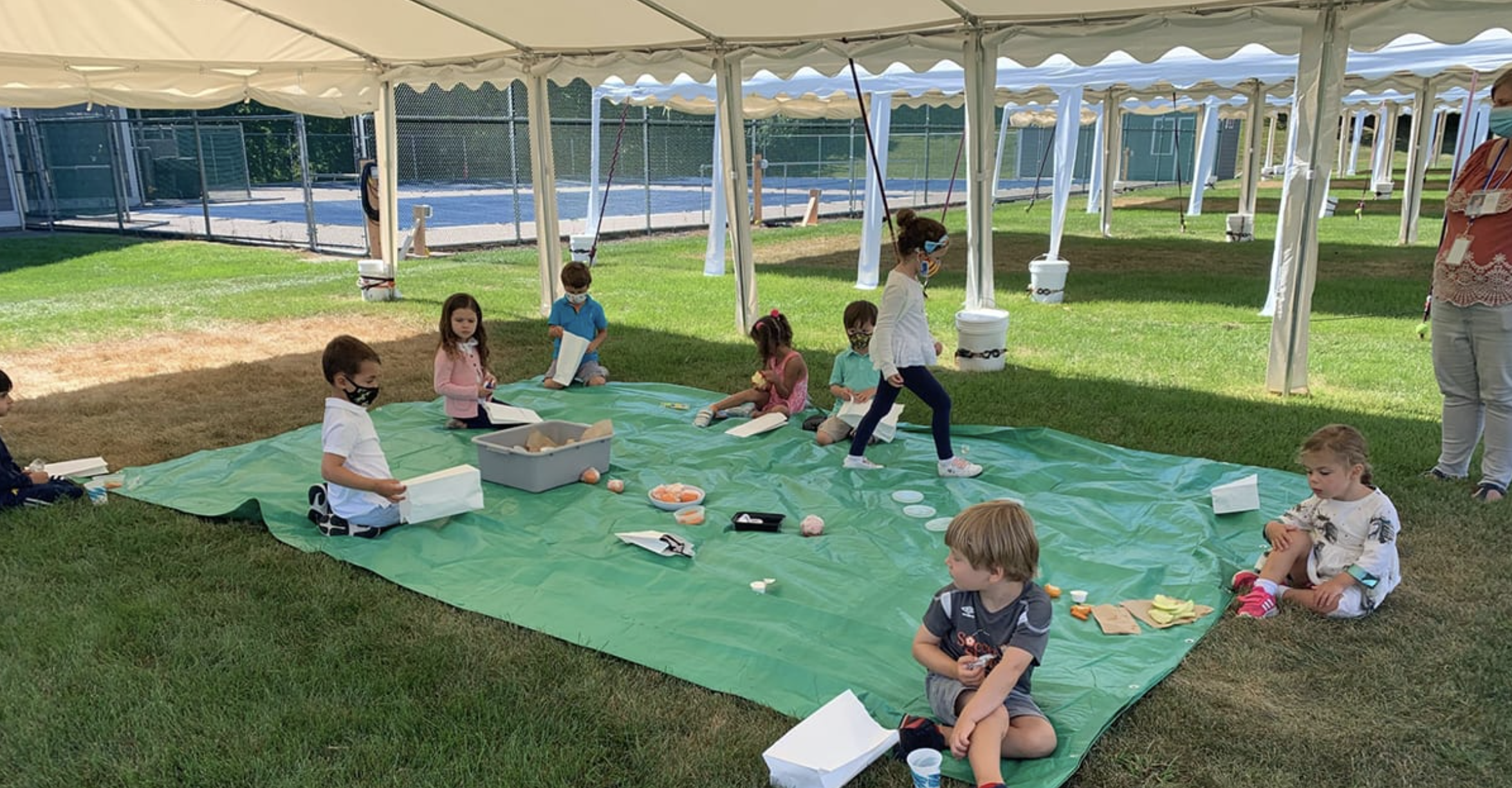
Meadowbrook Director of Facilities Christopher O’Toole explained,
The fully equipped tents will allow students and teachers to get as much fresh air as possible.
Cohorting
The AAP recommends cohorting classes to limit the number of students each individual is exposed to, and to make contact tracing easier if a case of COVID-19 arises. With this approach, a small group of students and teachers—a cohort—stays together all day.
At Meadowbrook, each grade has been split into two cohorts. Each cohort has its own indoor classroom and breakout space as well as its own outdoor classroom. Cohorts will eat lunch in their classrooms. The school has hired additional teacher aides to help with the logistics that the extensive health and safety measures require.
Meadowbrook Director of Innovation and Technology Jonathan Schmid noted, “We are fortunate to have the space and resources to put the most stringent guidelines in place and still have everyone at school five days a week.” See Meadowbrook’s full reopening plan here.
Masks, Hygiene and Sanitizing
CDC and AAP guidelines stress that all individuals over age two in a school should wear cloth face coverings that cover the nose and mouth, and wash hands frequently. Cleaning and disinfecting high-touch surfaces is also important.
Meadowbrook is providing masks for teachers, has added two staff members to clean bathrooms and main touch points frequently throughout the day, and has put antimicrobial sleeves on door handles, hand rails, and keyboards throughout the school.
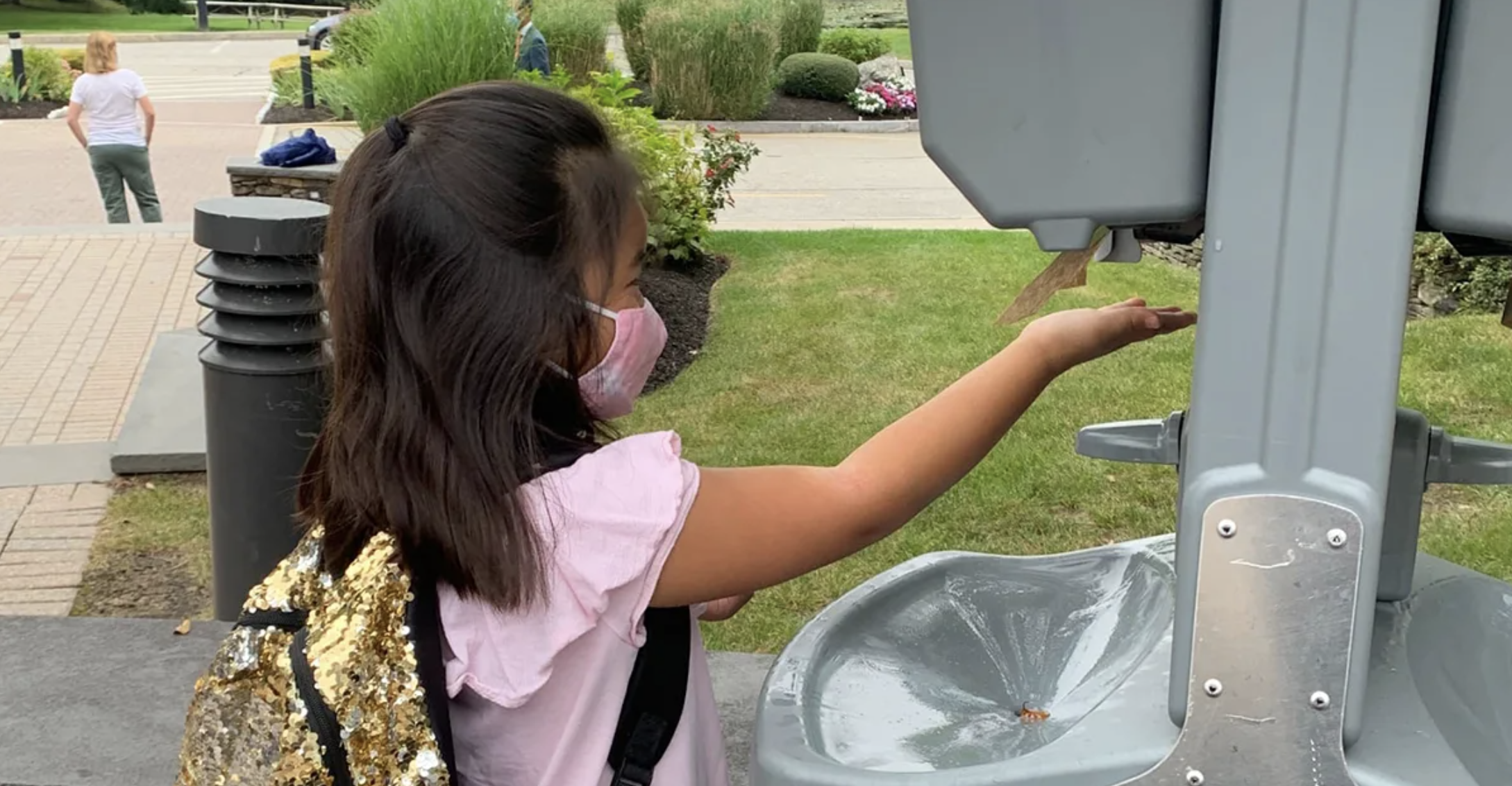
Ventilation
While face coverings are a critical measure to prevent respiratory droplet transmission, proper ventilation also plays a role. Heating, air conditioning, and ventilation systems should be functioning optimally, with MERV-13 filters in place if possible for that equipment, and continuous air exchange.
O’Toole explained, “The mechanical engineering firm that designed our HVAC system worked with us to determine every piece of equipment and every item that could be changed to balance maximum air flow and filtration—and we made all of those changes. We have double protection, with fresh air inside and the ability to go outside.”
“AAP recommends a layered approach to protect students, faculty and staff,” added Schmid. “Meadowbrook has multiple measures in place that together decrease the likelihood that cases will spread.”
Symptom Screening and Health Measures
According to the AAP, anyone with a fever of 100.4 degrees F or higher or any signs of illness should not go to school, and there should be a specific area to separate students who do not feel well. The AAP also recommends that if anyone has close contact with someone known to have COVID-19, they should quarantine for 14 days.
Meadowbrook has integrated a daily home screening tool into its School-Pass system, is screening for a temperature lower than 100, and has added extra health center space, protocols, and staff. Said O’Toole, “We are as prepared as we can be. We have to trust that families will try to be safe outside of school and let us know if they’ve been exposed to the virus or have symptoms. If everyone respects the rules, it should work well.”
Full Distance Learning Capabilities
For children who are at high risk of severe illness or have high-risk family members at home—and for all students if virus transmission rises in an area—in-person instruction may not be possible. That’s why distance learning remains a crucial component of every school’s plans this year.
Meadowbrook has developed Meadowbrook@Home for children who need to engage in school via distance learning each semester for family safety. One component includes an audiovisual system in each cohort’s space designed to include remote learners as much as possible. Large video displays allow all students and teachers to engage in class discussions together as they would if all were physically present in the classroom.
The school is also in close contact with local and state officials to monitor the regional virus situation so that it can quickly move all students to distance learning if need be. Meadowbrook is training all students and faculty to use online learning management systems, whether on campus or at home, and the entire faculty completed professional development in agile course design this past summer to gain the skills to flex to distance learning.
While no one knows how long schools will have to operate with such stringent measures and alternative plans, reassure your child that everything is being done so they can continue learning and growing—safely.
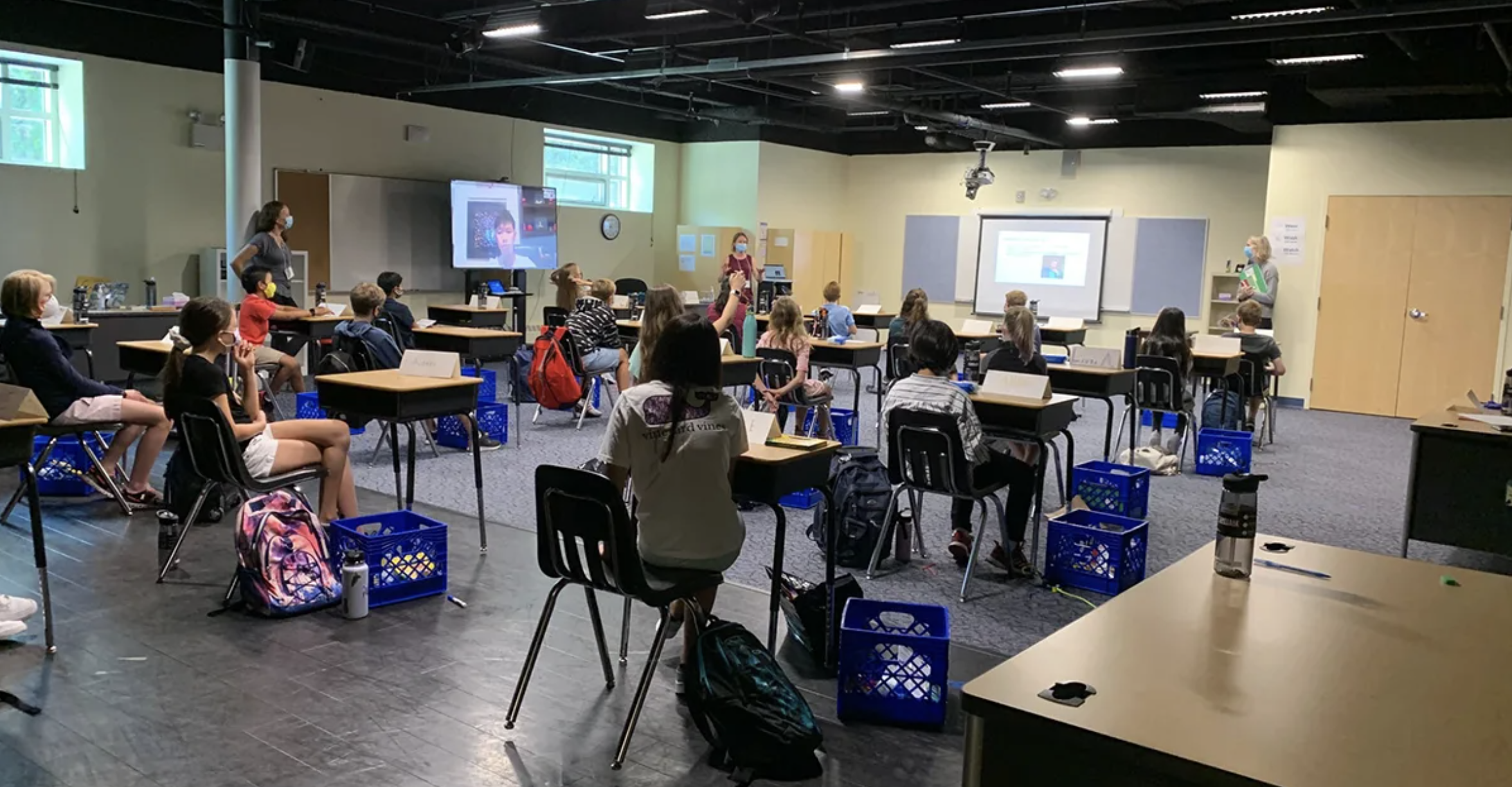
Resources
CDC: “Back to School Planning: Checklists to Guide Parents, Guardians, and Caregivers”


